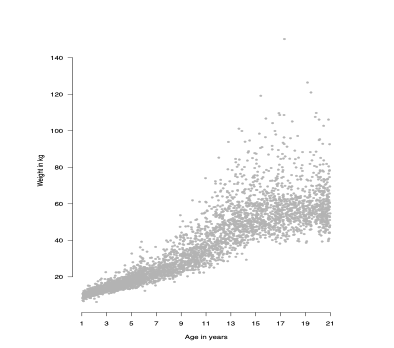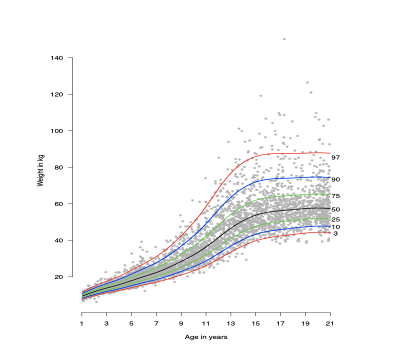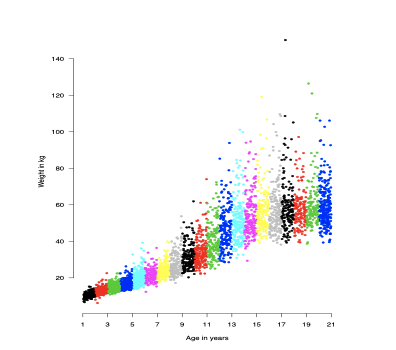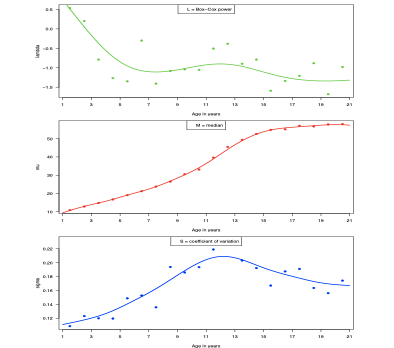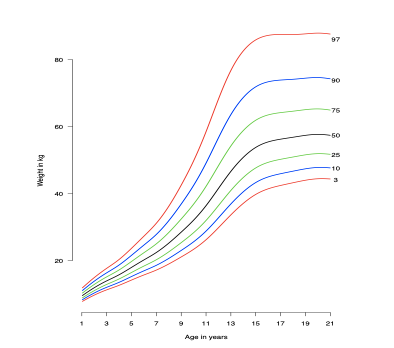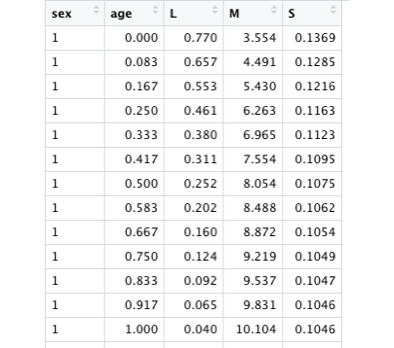@RCPCHtweets has won Best Health Tech Solution of the Year in the 2020 @health1tech awards for their electronic growth charts. Electronic growth charts have been around a while though, so why is it a big deal? [thread] https://vimeo.com/470609431 ">https://vimeo.com/470609431...
The datasets on which the UK charts are based, come from the UK90 dataset (from 17 different UK sources) and the WHO 2006 dataset for the infants, itself based on cohorts of children from 6 countries (USA, Brazil, Ghana, India, Norway, Oman)
https://www.who.int/childgrowth/mgrs/en/">https://www.who.int/childgrow...
https://www.who.int/childgrowth/mgrs/en/">https://www.who.int/childgrow...
Constructing a chart involves either measuring a cohort of children longitudinally (across a timespan) or cross-sectionally at different timepoints and stitching the data together. Children grow at different speeds at different ages, so the statistics involved are complex.
In the 1980s, Prof Tim Cole described a statistical method that made the construction of charts much simpler: the LMS method ( https://pubmed.ncbi.nlm.nih.gov/2354692/ )">https://pubmed.ncbi.nlm.nih.gov/2354692/&...
Previously, their distribution would have been described by applying curves to describe the top and bottom 3, 10, 25 and 50%.
Using the LMS method (Cole, JRSS A 1988), instead, the data are divided into narrow age bands. The skew in weight distribution in each band is summarised in 3 values - lambda (power transformation), mu (the mean) and sigma (coefficient of variation) - or L, M and S.
Centiles are functions of LMS curves, so if the L M and S curves are smooth, the centiles will be also.
(Cole TJ, Green PJ. Smoothing reference centile curves: the LMS method and penalized likelihood. Stat Med 1992;11:1305-19.)
(Cole TJ, Green PJ. Smoothing reference centile curves: the LMS method and penalized likelihood. Stat Med 1992;11:1305-19.)
The data tables behind the growth charts are a set of L, M and S values for a given age (and sex). If the age of the child, the sex and the weight is known, a centile or SDS can be calculated using the table and the equation.
Software packages that do growth charts all have to go through these steps: calculate the child& #39;s age, look up the correct L, M and S, interpolate the values if no exact match is found, and plug them into the equation.
There are lots of steps in this calculation that can go wrong, and each developer who has tried to automate this process has had to learn how to get it right, with very little opportunity to test the results, or debug which step failed if they were out but a small amount.
Their software is only there for the few - usually the users of the hospital system it was built for; a lot of work sequestered away. This has led to multiple proprietary systems, often expensive, whose methodology is largely unpublished.
@RCPCHtweets has taken the bold step of hosting the maths themselves as an API (application programme interface). A small team of developers, statisticians and childhood growth specialists - the same people behind the paper charts - have pooled their expertise to write the code..
...and host it open source for others to use to build their own. By sharing the code, developers are encouraged to peer review what they find, and contribute incremental improvements. The code is there now, if you want to get involved: https://github.com/rcpch ">https://github.com/rcpch&quo...
Even better, developers building growth apps don& #39;t have to rebuild from scratch: the API is hosted by RCPCH (details to follow) - they need only send the measurements, and they will get accurate results back. No need to do the maths in the app, they outsource it to the RCPCH.
And for those interested in growth charts, it could become a repository to host all references, to standardise how they are constructed and presented, not to mention a place to introduce new features and ideas, once peer reviewed in the academic press. eg Thrive lines, SDS charts
But the best bit has nothing to do with the niche world of growth charts. This is the first time a Royal College has hosted its own code. Why stop at centile calculation? Why not host other complex calculations too? @RCPCHtweets have all the expertise to make sure it is correct.
Early warning scores, jaundice curves, drug dose nonagrams, outcome predictors and so on. The royal colleges have so much medical expertise across their breadth - who better to write and host the code?
And how about their own best practice documents? Could those not also be hosted online, constantly updated, constantly peer-reviewed, all in one place, open source for all to contribute and contribute.
This could spark the beginning in a new phase in the way royal colleges engage with technology. What we are calling Royal Colleges 3.0, moving on from static websites to content developed and curated by the users themselves. @marcus_baw @bengoldacre

 Read on Twitter
Read on Twitter